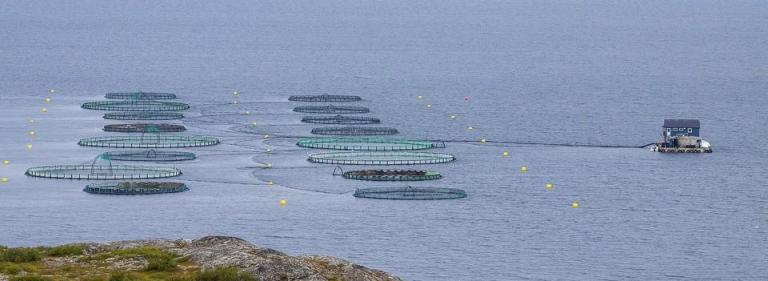Despite the vast diversity of biota in the European seas, rivers and lakes, consumers prefer only a few species for consumption. This is even more pronounced for aquaculture production where only a very limited number of fish and shellfish species are farmed. Moreover, some of the farmed species are higher predators and, despite improvements in feeds, fishing for feed is still a sad reality. Waste of seafood during production, processing, transport and consumption is massive; valorisation of fish and shellfish biomass is still far from achieving its full potential in the context of a circular economy.
Innovation under this topic should explore and test solutions for more sustainable fishing and/or aquaculture practices and diversify production through low trophic level fisheries and/or aquaculture. This could include animals (herbivorous, filter-feeders), algae (micro- and macro-), bacteria and fungi. Issues of biology, feeding, metabolism, disease, pathology, environmental sustainability, gear technology, processing, and marketing of products may be addressed.
Innovation should additionally focus on improving the environmental impact of fisheries and/or aquaculture, e.g. with more selective and less impacting fishing gear, low carbon fishing approaches, nutritious and safe feeds, recirculating aquaculture systems, integrated multitrophic aquaculture, disease control and sustainable solutions in fish and shellfish rearing. It may also identify captured species of high abundance and high nutritional value and reach out to consumers to promote their consumption.
Innovative processing, including digital and packaging solutions as well as formulation and/or fortification, may also be considered to minimise loss of fish and shellfish biomass, add nutritional and economic value to the chain (including by-products), enhance the shelf life of the products, and reduce food waste.
The projects that will be selected may also address issues of proximity between seafood production and consumption, e.g. by exploring possibilities to turn artisanal fisheries more environmentally friendly and economically viable. Innovative processing possibilities may also be explored.
A strong communication component and a genuine co-creation approach with stakeholders and end users, including from industry, consumers and NGOs, are key for a successful introduction, in the medium-term, of innovative and sustainably produced seafood in the EU and in Horizon Europe associated countries. Training and education activities should be included.
International co-operation with partners from non-associated third countries is strongly encouraged as a win-win scenario, while contributing to the European competitiveness and resilience.
Where relevant, proposals may seek synergies and capitalise on the results of projects funded under Horizon 2020, Horizon Europe, European Maritime and Fisheries Fund, its continuation European Maritime, Fisheries and Aquaculture Fund, and other funding streams.
Social innovation should be considered when the solution is at the socio-technical interface and requires social change, new social practices, social ownership or market uptake.
Objectives
In line with the European Green Deal objectives, the farm to fork strategy for a fair healthy and environmentally friendly food system, the EU bioeconomy strategy and blue growth strategy, the successful proposal will support environmentally friendly, inclusive, safe and healthy seafood production through innovation in the supply chain.
Projects results are expected to contribute to all of the following expected outcomes:
• Implementation of the ecosystem approach for sustainable management of marine or freshwater fisheries or in aquaculture development.
• Wider and more diverse range of seafood (including from fresh waters) available to European consumers, and greater overall seafood consumption.
• Tools to limit the waste and discarding of seafood during production, processing, transport and consumption, including the minimisation of the environmental impacts of fisheries and aquaculture through better gears or practices.
• Verification of existing and development of new seafood processing methods that add nutritional and economic value and minimise the environmental impact.
• Improved professional skills and competences of those working and being trained to work within the blue economy.
Link with CMA Goals
Goal I: Healthy marine and coastal ecosystems / Priority 3: Support sustainable fisheries and aquaculture In the Black Sea

